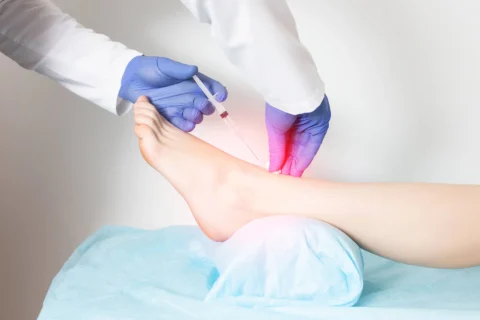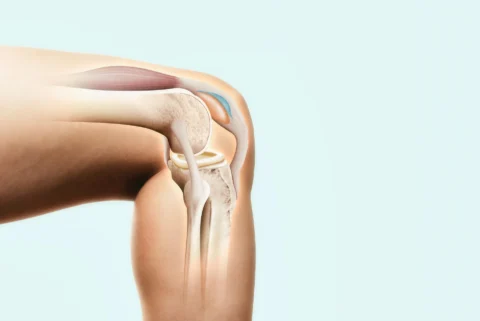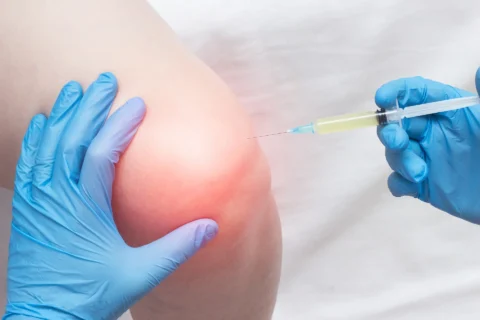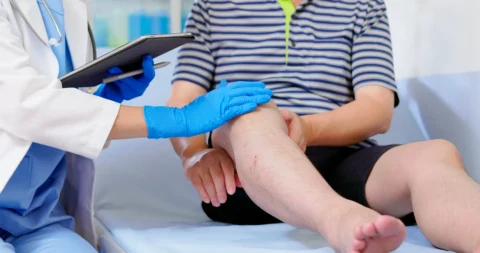Discover the latest in stem cell therapy for hip pain. Learn how this groundbreaking treatment can provide relief and improve mobility.
Have you ever imagined that your own body could hold the key to healing your hip issues?
Stem cell therapy for hips is not just a concept of the future but a present reality that is revolutionizing the field of medicine.
As you continue through this exploration, you will uncover the intriguing potential of harnessing the body’s natural healing mechanisms to address hip discomfort and enhance overall well-being.
What is Stem Cell Therapy for Hips?
Stem cell therapy for hips involves injecting your own stem cells into the hip joint to reduce pain and encourage cartilage regeneration.
It’s a regenerative medicine approach that holds promise for treating early hip osteoarthritis. This therapy offers a non-surgical alternative for those with chronic hip pain who want to avoid hip replacement surgery.
Research indicates that it has reduced the need for hip replacement in nearly 10% of patients with avascular necrosis of the femoral head.
Studies have shown that autologous bone marrow stem cell infusion is safe and effective for treating hip osteoarthritis, leading to improved clinical scores.
Patients typically experience relief from hip pain and improved joint function within a few months of undergoing this treatment. Unlike traditional hip replacement surgery, stem cell therapy encourages new tissue growth in the hip, potentially avoiding the need for invasive procedures.
Stem Cell Therapy for Hip Osteoarthritis
Suffering from hip osteoarthritis? Consider mesenchymal stem cell therapy as a non-surgical treatment option to reduce pain and improve joint function.
Mesenchymal stem cells, harvested from abdominal adipose tissue or bone marrow, are injected into the hip joint. Research suggests this therapy may halt cartilage damage progression and provide pain relief within 2-6 months.
There is ongoing investigation into whether stem cell therapy can delay or avoid hip replacement surgery by repairing a damaged hip joint.
Although further evidence is required, initial research indicates that stem cell therapy may be a promising non-surgical treatment option for hip osteoarthritis.
| Pros | Cons |
| Pain reduction | Limited long-term data |
| Improved joint function | Costly treatment |
| Non-surgical approach | Potential side effects |
| Potential to halt cartilage damage | Not covered by insurance for all |
| Potential to delay or avoid surgery | Variable effectiveness among patients |
Does Stem Cell Therapy Help Degenerative Hip Disease?
Consider mesenchymal stem cell therapy as a potential non-surgical treatment option for degenerative hip diseases like osteoarthritis, as it has shown promise in providing pain relief and improving joint function.
Here’s what you need to know:
- Mesenchymal stem cell injections have provided pain relief with no adverse effects in small studies.
- Most individuals who received stem cell therapy for hip osteoarthritis experienced reduced pain and improved joint function within 2-6 months in one report.
- Stem cell therapy may potentially reduce the need for hip replacement surgery for osteoarthritis.
- Adult stem cells have the ability to replace damaged bone cells, which could be beneficial for degenerative hip conditions.
Stem cell therapy holds potential for alleviating symptoms and improving function in degenerative hip diseases, offering a promising alternative to surgery.
Stem Cell Therapy for Hip Joint?
Looking for a non-surgical solution to relieve hip joint pain and discomfort? Stem cell therapy offers a promising alternative.
Stem cells derived from bone marrow can aid in regenerating damaged cartilage in the hip joint, particularly in early arthritis. Clinical trials have shown that mesenchymal stem cell injections in the hip joint are simple, cost-effective, and minimally invasive for treating hip osteoarthritis.
A stem cell treatment developed by a Yale physician may help some patients with avascular necrosis of the femoral head avoid hip replacement surgery.
While stem cell therapy for the hip joint shows potential, it’s still considered experimental. More extensive clinical studies are necessary to determine its effectiveness compared to traditional treatments such as medication or surgery, as well as to assess its long-term effects.
Does Stem Cell Therapy Work for Hip Pain?
Considering the promising potential of stem cell therapy for hip joint regeneration and pain relief, the question arises:
Does stem cell therapy work for hip pain? Here’s what we know:
- Stem cell therapy has shown promise in reducing pain and inflammation in hip osteoarthritis by regenerating cartilage tissue.
- Some clinics report long-lasting pain relief for hip arthritis with stem cell therapy, although evidence is still limited compared to other options.
- Research suggests that stem cell therapy may decrease the need for hip replacement surgery by around 10% for femoral head necrosis.
- Adult stem cells extracted from the hip area show potential for cartilage regeneration and muscle/tendon injury repair.
Stem cell therapy for hip pain is an evolving field, and more high-quality studies are needed to determine its effectiveness compared to other treatments like orthopedic surgery.
How Effective Is Stem Cell Therapy for Hips?
Stem cell therapy has shown promising effectiveness for treating hip pain, with several studies indicating significant improvement in pain relief and joint function.
Research suggests that stem cell therapy may benefit individuals suffering from various hip conditions, including avascular necrosis and hip osteoarthritis.
Here is an overview of the effectiveness of stem cell therapy for hips:
| Study | Findings |
| Patient Experience | Decreased resting and active hip pain with a mean 72.4% overall improvement |
| Safety and Efficacy | Intra-articular mesenchymal stem cell therapy for hip osteoarthritis is safe, with pain relief and improved function |
| Long-term Effects | Relief from pain and improved joint function within 2 to 6 months, with long-term effects warranting further research |
| Hip Replacement | Potential to reduce the need for nearly 10% of hip replacements, but still requires further investigation |
| Case Studies | Potential to reduce the need for hip replacement and provide long-lasting relief from hip arthritis pain, but larger trials are needed |
Will Stem Cell Therapy Fix My Hip and Back Pain?
Stem cell therapy has shown promising effectiveness for treating hip pain. Stem cell injections have shown preliminary success in treating hip osteoarthritis, but more research is needed to confirm their effectiveness.
The FDA hasn’t approved most stem cell products for use in treating pain. Some clinics claim that stem cell therapy can help treat hip injuries and osteoarthritis, but most claims require further research.
However, the potential of stem cell therapy to alleviate back pain remains uncertain based on current evidence. Evidence on the therapy’s effectiveness for back pain is still limited. Intradiscal stem cell injections are being studied as a potential treatment for back pain, but evidence is still limited on their effectiveness.
Thus, while stem cell therapy holds promise for treating hip pain, more research is still needed before conclusions can be made about its effectiveness for both hip and back pain.
Steps for Stem Cell Therapy Procedure for Hip
Before undergoing a stem cell therapy procedure for your hip, it’s important to understand the typical steps involved in the process.
First, stem cells are harvested from bone marrow, blood, or other tissues through a minor surgical procedure.
Once harvested, the stem cells are processed and enriched in a laboratory to increase their concentration.
The concentrated stem cells are then injected into the affected area of the hip joint through a minimally invasive procedure, which accelerates healing.
Post-procedure rehabilitation and exercises are crucial for the stem cells to aid repair and healing of damaged tissues in the hip.
Monitoring of progress through follow-up visits is essential to check the healing and recovery in the hip, and additional treatments may be provided if necessary.
What to Expect from Hip Injections for Stem Cell Therapy
After receiving hip injections for stem cell therapy, you may experience relief from pain and improved mobility within a few months. Here’s what to expect:
- Gradual Improvement: It may take a few months for the full effects of the stem cell therapy to be felt, as the injected stem cells work to repair and regenerate damaged tissue in the hip.
- Minor Side Effects: You might experience minor pain or swelling near the injection site, which should subside within a few days. This is a common and expected reaction to the injection medicine.
- Post-Injection Care: It’s important to follow the post-injection care instructions provided by your doctor, which may include avoiding strenuous activities and possibly undergoing physical therapy to aid in the healing process.
- Potential for Reduced Need for Surgery: Research suggests that stem cell therapy can reduce the need for hip replacement surgery in some patients with osteoarthritis.
Is It Painful to Have Stem Cell Therapy for Hip Arthritis?
After receiving hip injections for stem cell therapy, your focus shifts to a common concern:
Is the procedure painful for hip arthritis?
Following the treatment, some soreness and bruising in the area are normal, and you may experience discomfort for a few days as the injection sites heal. However, many patients report pain relief shortly after the procedure.
Hip pain from arthritis can be challenging to manage daily, often requiring long-term pain management if not corrected. Stem cell therapy aims to reduce pain and stiffness, potentially lessening the need for long-term pain management.
The therapy has been shown to significantly improve mobility and enhance the quality of life for individuals suffering from hip osteoarthritis.
While temporary soreness is expected, the goal is to reduce long-term hip pain without surgery and improve overall well-being.
What Is the Success Rate of Stem Cell Therapy for Arthritic Hips?
Stem cell therapy has shown promising success rates for treating arthritic hips, offering a potential alternative to hip replacement surgery.
The success rate of stem cell therapy for arthritic hips includes:
- Patients experienced a 31.2% overall improvement in pain reduction and increased function after stem cell treatment for hip osteoarthritis.
- Success rates for stem cell therapy procedures for hip arthritis range from 80-90% improvement over time according to studies of cartilage repair in knees.
- One study found stem cell therapy reduced the need for hip replacement surgery in nearly 10% of patients with arthritic hips.
- Patients reported 59% improved hip function on average after a stem cell procedure called Regenexx.
These findings suggest that stem cell therapy may provide significant improvement for hip arthritis, highlighting its potential as a viable treatment option.
Conclusion
Stem cell therapy for hips offers a promising alternative for addressing hip issues.
From treating hip osteoarthritis to degenerative hip disease, the potential benefits are vast.
With a non-invasive procedure and high success rates, this therapy provides hope for those suffering from hip pain.
By exploring the latest research and advancements, you can make informed decisions about your health and consider the potential of stem cell therapy for hips.











